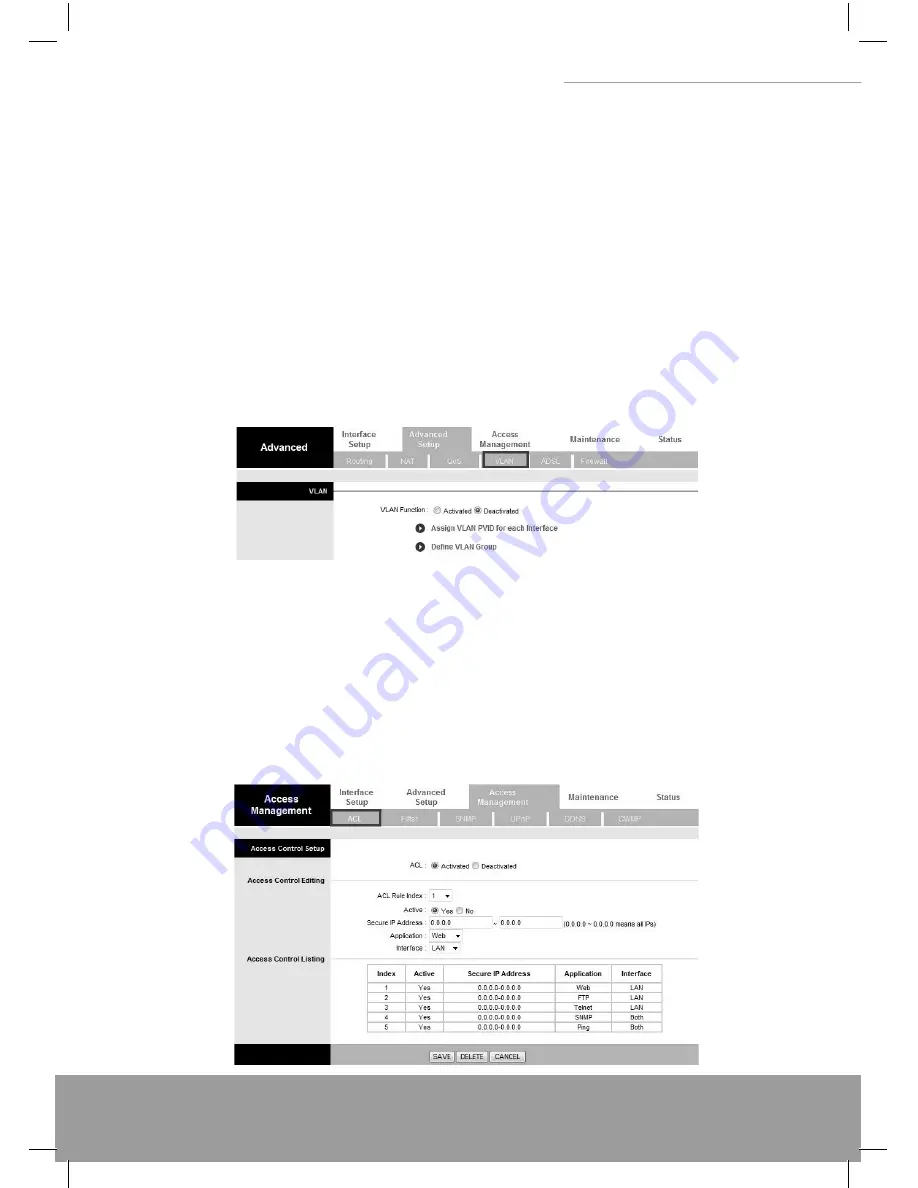
31
WIRELESS ROUTER ADSL
6.6 VLAN
Virtual LAN (VLAN) is a group of devices on one or more LANs that are confi gured so that they can communicate as if they
were attached to the same wire, when in fact they are located on a number of different LAN segments. Because VLANs
are based on logical instead of physical connections, it is very fl exible for user/host management, bandwidth allocation and
resource optimization. Port-Based VLAN: each physical switch port is confi gured with an access list specifying member-
ship in a set of VLANs. ATM VLAN-using LAN Emulation(LANE) protocol to map Ethernet packets into ATM cells and de-
liver then to their destination by converting an Ethernet MAC address into an ATM address. The key for the IEEE 802.1Q to
perform the above functions is in its tags. 802.1Q-compliant switch ports can be confi gure to transmit tagged or untagged
frames. A tag fi eld containing VLAN (and/or 802.1p priority) information can be inserted into an Ethernet frame. If a port
has an 802.1Q-compliant device attached (such as another switch), these tagged frames can carry VLAN membership in-
formation between switches, thus letting a VLAN span multiple switches. However, it is important to ensure ports with non-
802.1Q-compliant devices attached are confi gured to transmit untagged frames. Many NICs for PCs and printers are not
802.1Q-compliant. If they received a tagged frame, they will not understand the VLAN tab and will drop the frame. Also, the
maximum legal Ethernet frame size for tagged frames was increased in 802.1Q (and its companion, 802.3ac) from 1518 to
1522 bytes. This could cause network interface cards and older switches to drop tagged frames as “oversized”
Assign VLAN PVID for each interface: You can assign ATM VC, Ethernet (LAN) port, and Wireless LAN port’s PVID in
this section. Defi ne VLAN Group: Based on each VLAN group, you can confi gure each group’s VLAN setting. You can
confi gure up to 8 VLAN settings.
7. Access Management
7.1 ACL
Go to Access Management
ACL to enable remote management. Access Control Listing (ACL) is a management tool
that acts as a fi lter for incoming or outgoing packets, based on application. You may use telnet or Web to remotely man-
age the ADSL Router. User just needs to enable Telnet or Web and give it an IP address that wants to access the ADSL
Router. The default IP 0.0.0.0 allows any client to use this service to remotely manage the ADSL Router.
















































